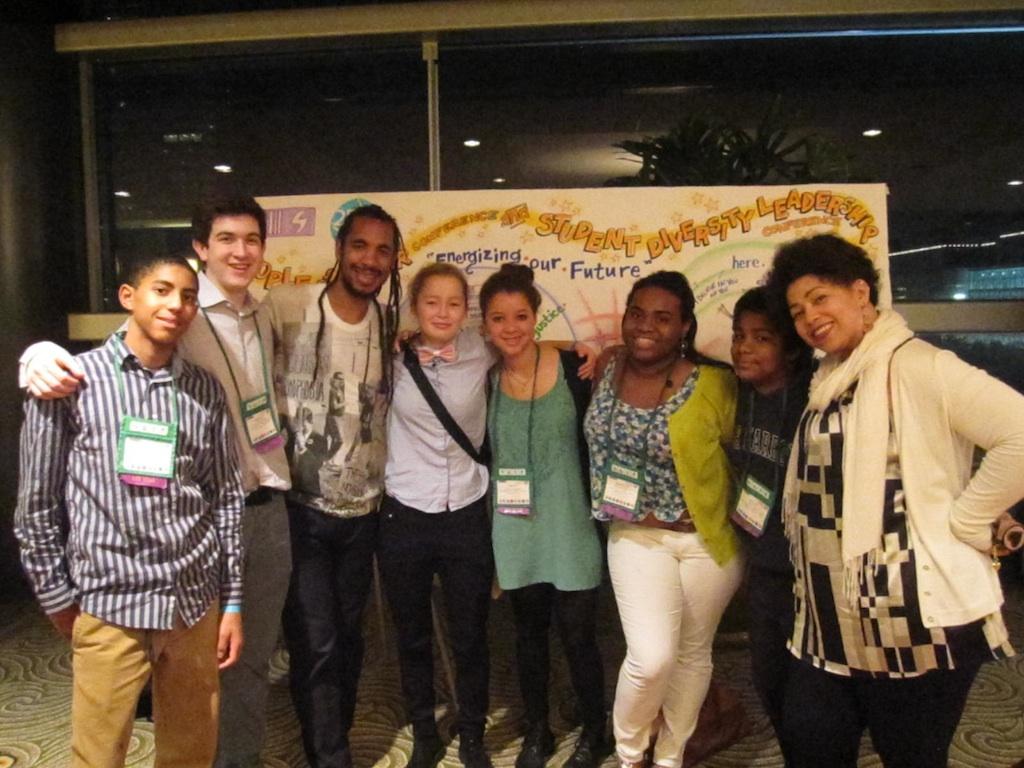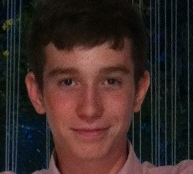For many years, students from BC have traveled all over the country to participate in the Student Diversity Leadership Conference (SDLC). Over the past few years our students have gone to San Diego, Philadelphia, Florida. This year’s participants made their way to Houston, Texas, to join in on the enriching conversation of diversity. SDLC “is a multiracial, multicultural gathering of upper school student leaders (grades nine-12) from across the country that focuses on self-reflecting, forming allies, and building community. Led by a diverse team of adult and peer facilitators, participants will develop effective cross-cultural communication skills, better understand the nature and development of effective strategies for social justice, practice expression through the arts, and learn networking principles and strategies” (NAIS.org). Below are personal anecdotes about the experience, each explaining a different aspect of the conference, and each telling a separate story:
August Rosenthal:
Opening- What is the SDLC Conference (including Theme) & Networking
We pulled into the hotel in Houston just after dark and unloaded our bags from the van. Before the conference had even started, the hotel lobby was buzzing with hundreds of students reuniting with others they hadn’t seen in a year, meeting new people, and preparing for the next day. Like most students at the conference, this was my first year attending SDLC, and I had absolutely no idea what I was in for.
Early the next morning, after quick coffees and yogurt parfaits with our Berkeley Carroll group, 3000+ people—1400 students and 1600+ faculty—sat in an auditorium, watching the SDLC/POCC opening. The conference was celebrating the last 25 years of SDLC/POCC’s history. Twenty-five years of innovation, collaboration, and exploration of what diversity means in Independent Schools, in our communities, in our lives. We took the powerful words of the opening speeches and split up, faculty in one conference (POCC) and students in another (SDLC).
SDLC (Student Diversity Leadership Conference) focused on raw, honest conversations about the eight social identifiers: age, gender, ability, race/ethnicity, socioeconomic status, religion, and sexual orientation. We spent two days reevaluating how we see the world and the role we play in it through family groups, affinity groups, peer facilitation, and mixed adult and student affinity groups (which you will read more about in a moment). Of course, there was also time to create strong bonds with other students and schools across the nation.
Literally minutes after the conference ended, tens of Facebook groups relating to SDLC formed, and within days there were over 1000 members. Each of the smaller sections we split into during the conference have their own groups as well, and they are still active forums. The students in the Tri-state area are all brainstorming ways to get schools more involved in diversity issues and have been quite helpful in planning Berkeley Carroll’s next Diversity Day.
Monique Tinglin: Combined Adult & Student Affinity Groups
The Student Diversity Leadership Conference was an amazing life changing experience of self-discovery. The safe and open community allowed me to be fully present and digest diversity issues. One component of the conference which was most compelling for me was the student and adult affinity groups. On the last day of the conference, students gathered with adults who identified with the same race and gender. I attended the African-American female affinity group. In this setting, we discussed and responded to questions such as: How does our race affects us (positively or negatively) in our respective communities and institutions? What challenges are presented when being a minority in a predominately Caucasian school? How does one overcome them? What support systems do schools need to improve the environment for students of color? Thought provoking questions and meaningful conversations were just the beginning of this affinity group. For the first time, I had the opportunity to connect with educators on a personal level. For once, we spoke the same language!
One of the moderators asked a question that really struck me: “As African-American women, what is your legacy?” The question completely took me off guard. I was forced to think beyond myself and reflect on my purpose. We all had to go around the circle and answer the question. When it was my turn I calmly said, “My legacy will be paving the way for the future generations for African-American students in my school and community. I don’t want the future generations of Black students to struggle like I had to. I will be a role model to others, defy the stereotypes placed against my race and exemplify leadership abilities. When I graduate in 2014, my legacy will live on!”. By the end of this Black/African-American female affinity group, I felt that I truly uncovered my personal mission and passion for diversity. The women in the room suddenly became a huge family. This experience was breathtaking and empowering all at once. Participating in the Student Diversity Leadership Conference has inspired me to be a catalyst of change in my school and my community at large.
Ana Konyk: Student Affinity Groups at SDLC
At SDLC, we have affinity groups. These groups are all based on race, except for LGBTQQIA and transracially adopted. The only criteria is that you speak from the “I” perspective. This means that you have to personally identify with the group you choose through past experiences and memories. Affinity Groups are opportunities for students with common and shared experiences to come together.
Affinity groups are a key part of the SDLC experience because they allow students to share stories that everyone can relate to on a very personal level. It is a place of complete acceptance and a space for students to speak their minds freely. Affinity groups strive to create a sense of belonging within the SDLC community.
Devin Halbal: New Experience
When I first walked into the conference center, I was amazed to see so many people. Every student had been separated into a home group. My home group was the group I got the closest to because I spent my whole day with them. People in my group came from all over the country. (One of the girls in my group came from Bermuda.) The days I spent at the conference center were very fun and helped me learn a
lot about religion, sexual orientation, ethnicity, and much more. Everyone was so open about their life stories. This was my first time being without my family, but I enjoyed it very much. I met great friends, and I will never forget this experience.
Richard Palacios: Family Groups at SDLC
What an experience! At SDLC, we were in our family groups most of the time while we were in Houston. In these family groups, many intimate and heartfelt connections were made. Our family groups were a place where we could discuss in-depth problems in our school with the eight social identifiers. There was a lot of student-to-student advice on how to react and how to give a new way to see diversity and to get everyone to hear our voice in our schools. The SDLC facilitators were great. They asked many questions that steered the conversation in the right direction. I feel this group was very helpful at SDLC. Besides the educational aspect of the group, many great friendships were formed and are still continuing. The reason for why the family groups worked so smoothly was because each of every one of the students at SDLC was open to sharing his or her story. The last time we came together as a group we participated in a heart-opening activity, everyone sat in a circle with the lights off, and students got to say whatever they felt like saying. Many shared crazy stories that directly touched my heart. As a result, the family groups helped connect students that usually would not connect because of vast differences, and that led to great and deep conversations. It was an unforgettable experience.
Maya Littlejohn: Peer Facilitators at SDLC
Within the Family Groups, we had groups of about 10 kids called Home Groups. We usually met in Home Groups to reflect and discuss on activities in a more intimate setting. These groups are lead by peer facilitator, which I was lucky enough to be this year. Being a peer facilitator gave me new perspectives that I would not have otherwise had. It was no longer just about me and my point of view. Instead, I was in charge of guiding meaningful discussions and connecting everyone in the group.
One of my favorite parts of SDLC this year was the peer facilitator training. It took place the night before the conference began. We completed workshops and discussions that taught us how to actively listen, ask thoughtful questions, and maintain an engaged and excited group of kids. My favorite activity, and one that I will remember for the rest of my life, was when we learned how to ask questions that lead to insightful and real conversations. Rodney Glasgow, the chair of SDLC, masterfully demonstrated this process. He sat in a chair opposite a student and asked: “How did you get to Houston today?” He listened to the student recount his story for about three minutes, then, during a pause, he asked a question about something the student mentioned at the beginning of his story. He was focusing on what he felt was important about the student’s story. After answering this, the student was telling us more about his life than he’d told anyone before. It was moving and wonderful because we had created a safe environment for him to talk about his experiences. Then, it was our turn. We formed groups of two, each person answered the same question, and we had conversations like the one we’d just seen. We learned a lot about each other, but never felt like it was forced or uncomfortable. It’s moments, conversations, and instant bonds like these that cannot be formed in many places other than SDLC. Without the tools I gained from facilitator training and facilitating my home group, I would not have learned how important it is to be silent. This year I took the role of listener instead of speaker. I learned so much about the people in my groups just from listening to their ideas and opinions. Through them and their stories, I was able to reflect on my own experiences and learn about myself.


